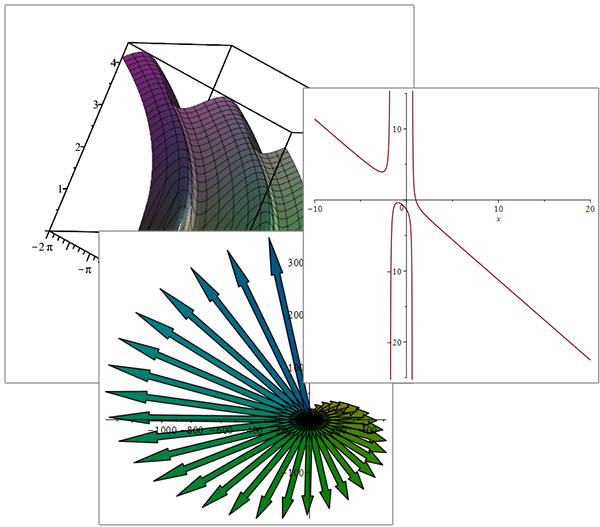What's New in Maple 2021
From small but incredibly useful interface improvements to whole new areas of mathematics, Maple 2021 offers a range of enhancements across the entire product.
Always More Math
Maple is all about math, so every new release expands and deepens the Maple math engine so you can solve more problems.
Solving More ODEs and PDEs
Maple is the world leader in finding exact solutions to ordinary and partial differential equations, and Maple 2021 offers new techniques that let you solve more problems than ever.
Need for Speed
Performance enhancements include a significantly faster map command, which is used extensively throughout the Maple library and in user code.
Understanding the Universe
Maple’s state-of-the-art environment for algebraic computations in physics is stronger than ever, with more tools for tackling problems in quantum mechanics, general relativity, and more.
Looks Just Right
Sometimes small changes can make a big difference, like when plot domains are automatically selected to put the most interesting features of a graph front and center.
Streamlining the Workflow
Working in Document Mode is now just a little smoother, with new ways to insert blank lines, combine math and text, and advance to the next computation.
LaTeX Made Easy
With its greatly improved LaTeX support, you can take advantage of Maple’s authoring environment and then easily convert your work to LaTeX without the need for further adjustments
Signals and Images
More tools mean you can analyze signals and images in new ways, using commands or the context menus.
Study Buddies
All three Clickable Calculus Study Guides are now included with Maple, to help you learn and teach Calculus, Precalculus, and Multivariate Calculus.
Learning about Differential Equations
The new Student ODEs package provides lots of tools for learning about differential equations, including helpful visualizations and step-by-step solvers.
Creating Content for Maple Learn
New content creation tools make it easy to create sophisticated Maple Learn applications, and the tools can be used for Maple content, too.









